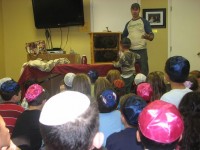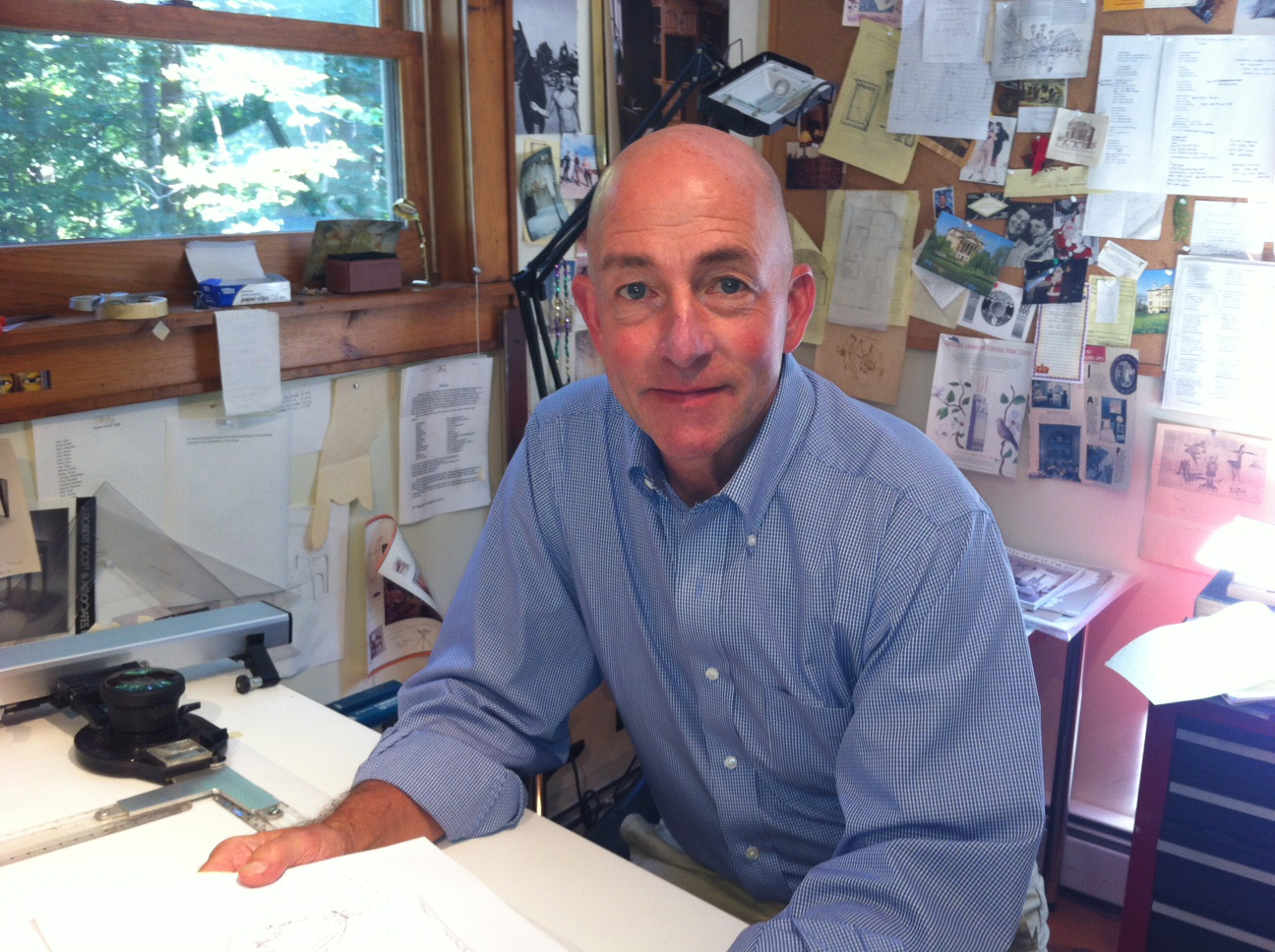Students Learn About Bees to Herald in Sweet New Year
A visit from Mike Bruen and his bees from the White Oak Apiary on the eve of Rosh Hashanah, the celebration of which begins today, drew much excitement and just as many questions from the students at Temple Beth Shalom’s Religious School last Wednesday afternoon.

Rabbi Eytan Hammerman explained the visit from Bruen and his bees, in addition to the gifting of honey bears to the families in the congregation, was symbolic of the expression used during the celebration of the Jewish New Year, when it is tradition to eat sweet treats: “Shana Tova U’Metuka” or “Have a Sweet New Year.”
Asked by the rabbi, a student named Miles said the expression was to wish someone the best for the coming new year.
Asked what honey had to do with it, a student named Austin said, “Because honey is sweet!”
Bruen unveiled a glass case filled with hundreds of bees and their queen.
A student inquired as to how Bruen had corralled the bees into the apparatus he said he called, “Bee TV.”
“Just like with your moms, they want to be with the queen,” Bruen said, adding that the queen laid upwards of 3,000 eggs per day.
More interesting facts about bees followed with a constant popping up of raised hands offering more questions from the curious students.

Another student asked what happened if the queen bee died.
Bruen explained that once the bees detected the queen was dead, they would begin to secrete what is called royal jelly from their heads that they then would feed to a nascent bee, who would morph into the new queen.
Bruen said that over the course of its lifetime, which was about three to four months, one bee would only produce one teaspoon of honey.
“So, you can see how many bees it takes to make a jar of honey,” Bruen said.

Adam has worked in the local news industry for the past two decades in Westchester County and the broader Hudson Valley. Read more from Adam’s author bio here.


